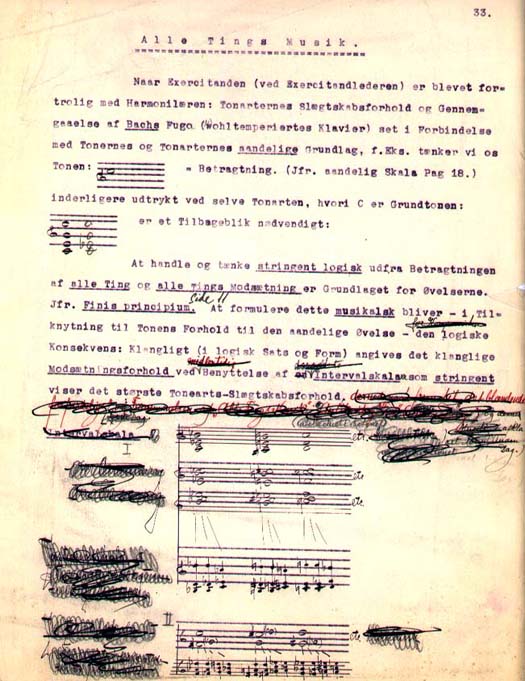The ideas behind the music
The music of all things
Naturally enough, music played a decisive role in Langgaard's thinking about the society of the future. According to him, however, this central position enjoyed by music requires that it can be 'understood', and this calls for "new ears" and "a new kind of music".
Langgaard intended to develop these "new ears" by introducing a musical education based on religion, to be practised within the framework of a sort of monastic organisation called "The Musical Society of Jesus". The educational system to be used was to be that found in the Exercitia spiritualia (Spiritual Exercises, published 1522) of Ignatius Loyola, the founder of the Society of Jesus (Jesuits), which Langgaard partially translated and adapted to this purpose.
On this basis, the "new kind of music" would be able to express religious sentiments and existential circumstances in such a precise and logical way that they would not only be understood intuitively, but also intellectually. This is music with a message, a programme - music that can express all things. Langgaard called it "The music of all things".
The project remained at the level of ideas, however, and Langgaard never succeeded in putting it into practice in musical terms, though the music he was thinking of was clearly something like the opera, Antikrist (Antichrist), and Symphony No. 6, from which he quotes examples in his manuscript.

Unfortunately, Langgaard's manuscript concerning "The music of all things" is not complete. This page (33), in which he begins to realise his ideas in musical terms, is the second last page. The last page (34) contains examples from the scores of the opera, Antichrist and Symphony No. 6.
![]()